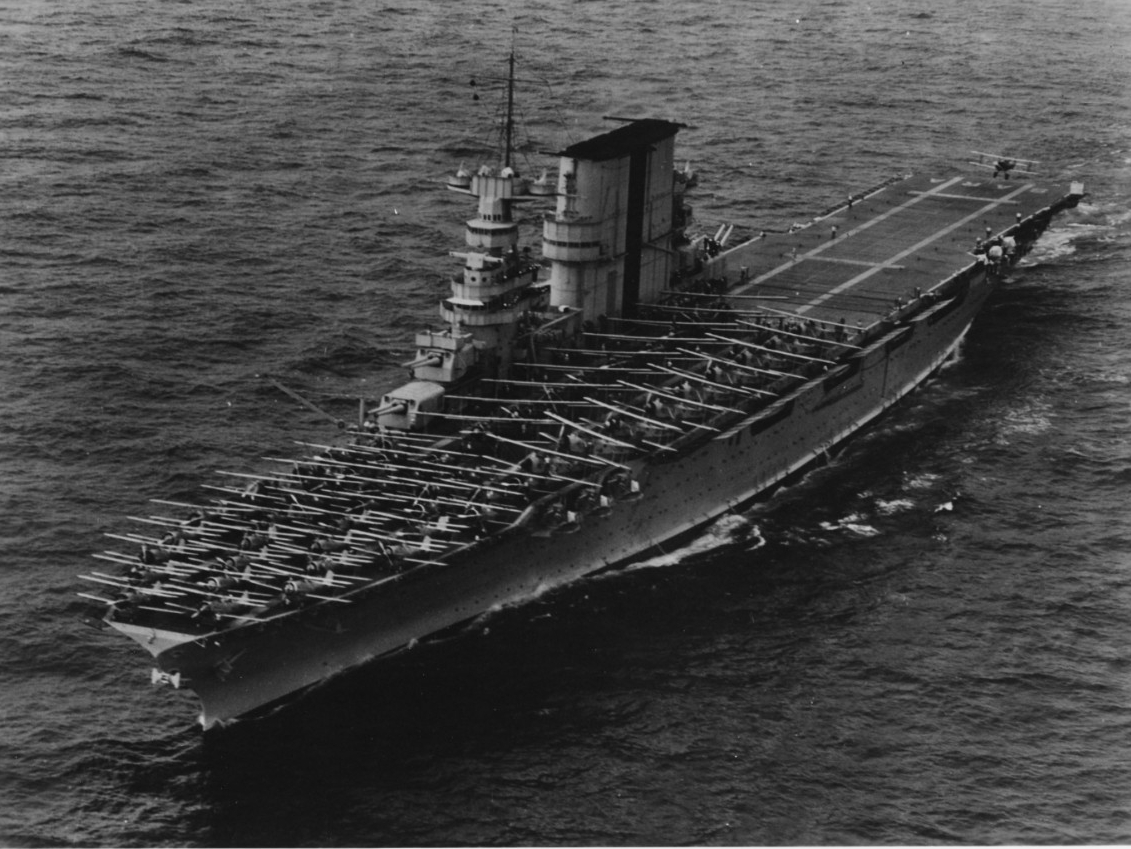
In the early years of the 20th century, the oceans were ruled by battleships—giant, firepower-laden ships that represented the power and navy pride of a nation. But as aviation technology started to develop, a new type of warship entered the scene undetected: the aircraft carrier. In place of massive guns, these air-supported airfields transported squadrons of aircraft, enabling navies to attack far across the horizon. The soon-to-be Pacific wars of World War II would show that the aircraft carrier, and not the battleship, would establish naval dominance, as the USS Saratoga, USS Lexington, and USS Enterprise took to the front.

Well before fighting broke out, the U.S. Navy began experimenting with the possibilities of these carriers. Carrier Division 1, under Rear Admiral Aubrey W. Fitch, employed the Lexington and Saratoga—designed originally as battlecruisers but converted to carriers—live test beds for naval aviation. Lexington, with its new flight deck and streamlined air operations, established a design standard for carriers. Although she would eventually be lost during the Battle of the Coral Sea, her aircraft caused severe reversals to Japanese expansion, demonstrating that sea power had turned from guns to aircraft.

Commissioned in 1927, the Saratoga soon developed a reputation for being hardy and adaptable. She was larger than many of her counterparts, with the ability to launch and recover planes quickly and perform several operational functions. Even though she was torpedoed and had lived through kamikaze attacks, she kept coming back to fight again. Throughout such key campaigns as Guadalcanal, her air groups were instrumental in halting Japanese gains. Saratoga’s fortitude and flexibility had a lasting impact on U.S. Navy carrier tactics and influenced generations of pilots.

But it was the USS Enterprise—informally known as “The Big E”—that gained the most legend of them all. Commissioned in 1938 and commanded by Vice Admiral William F. Halsey Jr., Enterprise gained a reputation for arriving on the scene at the right time to tip the balance of a battle. From reconnaissance flights to direct attacks, the carrier and her crew showcased the strategic power of naval aviation.

When the Japanese struck at Pearl Harbor on December 7, 1941, fortune favored the U.S. carriers. Saratoga was in dry dock on the West Coast, Lexington was transporting aircraft to Midway, and Enterprise was coming back from Wake Island. Their absence saved a nucleus of American naval power, which proved crucial in the ensuing months.

The true test six months later at Midway would come. Japan hoped to capture Midway Atoll and encircle the U.S. fleet, but cryptanalysts in America had cracked Japanese codes. By verifying the target through a clever deception regarding Midway’s water supply, U.S. forces made plans for a counter-ambush.

Carrier warfare reached a turning point from June 3 to 7, 1942. American torpedo planes opened, attracting Japanese fighters and suffering heavy losses, paving the way for Enterprise and Yorktown dive bombers. In a matter of minutes, three of the Japanese carriers, Akagi, Kaga, and Soryu, were on fire. The fourth, Hiryu, temporarily attacked Yorktown but was eventually sunk by planes from Enterprise. In a single day, Japan’s Pacific naval supremacy was shattered, and momentum had decisively swung to the Americans.

Admiral Lisa M. Franchetti later said, “Skill, faith, and valor—the gallantry and cleverness of those dashing sailors in the central Pacific on that balmy June morning—changed the direction of the war.” Midway was more than a battle victory; it was the point at which the U.S. Navy took the initiative in the Pacific.

Enterprise became a legend. Her aircraft were responsible for sinking three carriers and a cruiser, and she continued to combat in virtually every important Pacific operation thereafter. At war’s end, she had received 20 Battle Stars, the Presidential Unit Citation, and the Navy Unit Commendation, earning her the title of most decorated vessel of the war.

Behind the great ships were the women and men who served on them. Midway communications leader Chief Petty Officer Bill Norberg, later commented, “I am proud to be a member of that ship and crew, which did so much to bring an end to the Pacific War.” His comments underscore that in addition to strategy and steel, it was human resolve and commitment that prevailed.

Modern-day giant carrier strike groups, able to project power worldwide, look back to these trailblazing vessels. The Saratoga, Lexington, and Enterprise were not simply warships but a new method of sea fighting, one characterized by flexibility, range, and air dominance. The Pacific War did prove that aircraft carriers had become the final weapons of naval power, and dominating the air meant dominating the seas.
